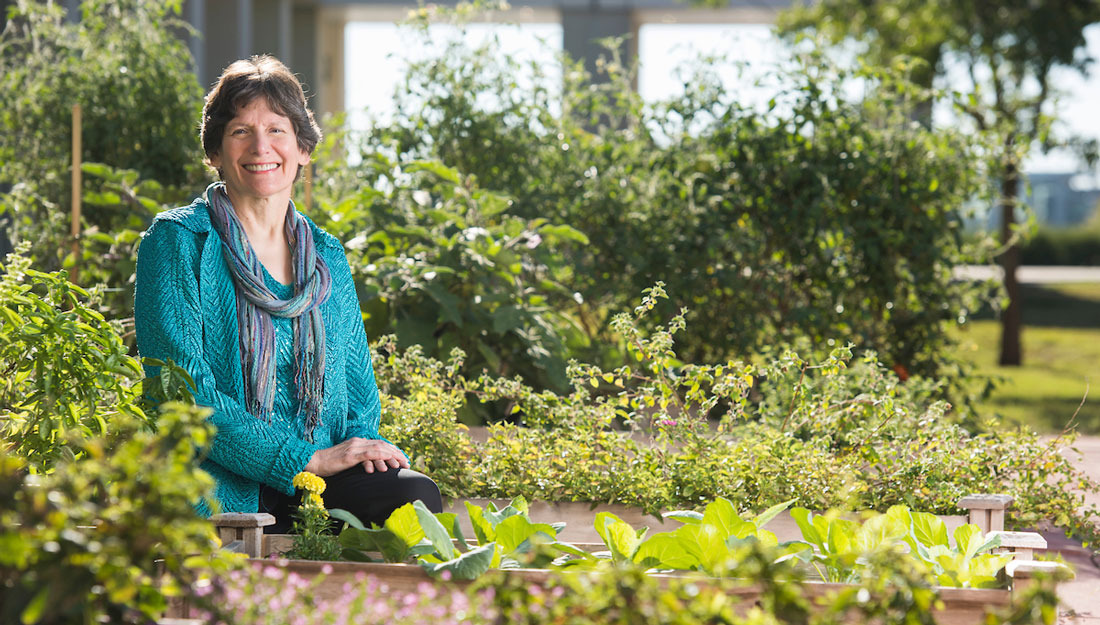SRPH hosts ribbon-cutting for new complex
(COLLEGE STATION, TX) — After years of borrowing space in Bryan and College Station, the Texas A&M Health Science Center School of Rural Public Health finally has a home of its own to continue innovative efforts for assisting underserved and rural areas of the state.
A formal ribbon-cutting occurred Wednesday for the HSC School of Rural Public Health’s new three-building, 100,000-square-foot complex, located on the Texas A&M University campus at the corner of Adriance and Raymond Stotzer Parkway.
Ciro V. Sumaya, M.D., M.P.H.T.M., dean and Cox Endowed Chair of the HSC School of Rural Public Health, was one of several speakers at the event, which included a reception and faculty-guided tours. He was joined by Bob McTeer, Ph.D., chancellor of the Texas A&M System; Nancy Dickey, M.D., president of the HSC and vice chancellor for Health Affairs for the Texas A&M System; and many other administrators, local government officials and community leaders.
“The school has impacted at least 118 counties in Texas to date through implementing public health interventions for such formidable health challenges as obesity, toxic environments, increasing costs for health care, improving the quality of life for the aging, a large uninsured population, health disparities and bioterrorism,” Dr. Sumaya said. “We are delighted to be on the Texas A&M campus, which we feel is essential and strategic for our many collaborative educational and research efforts with Texas A&M colleges and entities.”
Accredited by the Council on Education for Public Health, the HSC School of Rural Public Health is the first of its kind in the United States. Founded in 1998 and initially housed in space off-campus, it is committed to improving the health of communities — with an emphasis on rural and underserved populations — through education, research, service, outreach and creative partnerships.
“We stand before you today to acknowledge our commitment to programmatic development and enhancement and to acknowledge there is no school in the United States, and perhaps the world, better prepared to improve the health of rural communities,” said Dr. Dickey. “This new complex is a testament to the successes of those who created the Health Science Center School of Rural Public Health and the successes of those yet to come.”
Because rural Texans face more health problems and have fewer resources for health-related difficulties than Texans in urban areas, they are more likely to die from accidents, abuse alcohol, be unwed teenage mothers, have uncontrolled diabetes, have undiagnosed and untreated mental illness and have inadequate prenatal care.
That’s where the HSC School of Rural Public Health comes in. It received several million dollars in research funding last year from the Centers for Disease Control, the National Institutes of Health and the Environmental Protection Agency. It also offers three master’s and two doctoral degree programs for students and ranks No. 1 in diversity of its student population among the 37 accredited public health schools in the United States.
“The Texas A&M System had great foresight in establishing a School that has so directly impacted the lives of those in rural and underserved population areas of our state,” said Dr. Sumaya.
Construction on the $21.3 million complex began in September 2004, and personnel began moving into their offices in January. It includes classrooms, research laboratories, administrative and faculty offices, computer labs and centers of excellence.
Funding was provided primarily through the Texas Legislature via the Permanent University Fund (PUF) and tuition revenue bonds. The chancellor’s office offered additional funds that permitted expansion of the original building plan.
“This is certainly an important milestone for the Health Science Center and the System as a whole,” said Dr. McTeer. “A School of Rural Public Health could not be more appropriate for a land-grant institution like Texas A&M.”
With the new complex in place, the HSC School of Rural Public Health can focus on its goals of becoming a national resource on rural public health; expanding faculty ranks to bolster the scope and depth of scholars and educators; expanding degree programs, including development of joint degree programs with other disciplines; creating closer relationships to communities in addressing unmet public health needs and priorities; strengthening international activities and partnerships; and establishing a robust fund-raising capacity.
“Continuing to serve the state and promote an optimal educational environment that develops and strengthens the necessary competencies of current, future and former students is one of the Health Science Center’s long-term goals,” Dr. Dickey said. “By providing our School of Rural Public Health with state-of-the-art facilities and preparing it with the tools necessary to offer innovative curriculum, we’re propelling ourselves into the next stage of excellence.”
The Texas A&M Health Science Center provides the state with health education, outreach and research. Its five components located in communities throughout Texas are Baylor College of Dentistry, the College of Medicine, the Graduate School of Biomedical Sciences, the Institute of Biosciences and Technology and the School of Rural Public Health.
Media contact: media@tamu.edu


